EQ: What is it and Why Does it Matter?
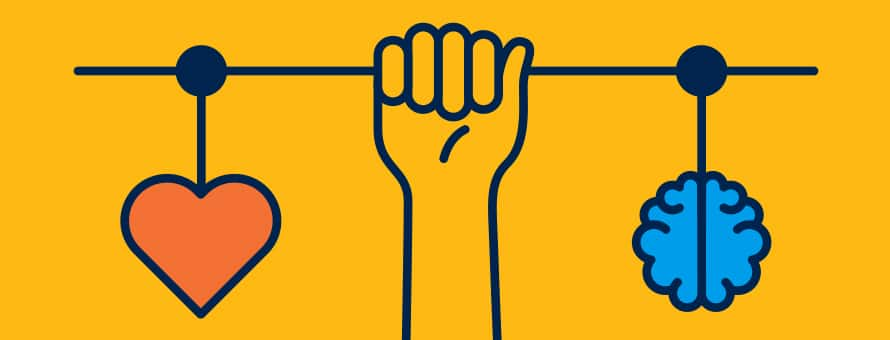
Know before you read
At SNHU, we want to make sure you have the information you need to make decisions about your education and your future—no matter where you choose to go to school. That's why our informational articles may reference careers for which we do not offer academic programs, along with salary data for those careers. Cited projections do not guarantee actual salary or job growth.
In recent years, research has increasingly shed light on a set of skills that are collectively referred to as emotional intelligence. According to Mental Health America — the nation's leading national nonprofit dedicated to the promotion of mental health, well-being and illness prevention — emotional intelligence (EQ) involves identifying and understanding the emotions of oneself and others. And as it turns out, it's not just a skill set that helps us in our personal relationships. It can make us more effective in the workplace, too.
What Does It Mean to Be Emotionally Intelligent?
In the early 90s, psychologists Peter Salovey and John Mayer began to notice that some people are just better, across the board, at being observant of feelings in the room and how those feelings impact everyone: in conversation, conflict resolution and decision-making. These people can name emotions. Understand them. Manage them. Use them effectively. And they do these things better than the average person can.

Dr. Josh Garrin, associate dean of social sciences at Southern New Hampshire University (SNHU), pointed out that humans acquire and employ emotional intelligence all the time — and, often, without realizing it.
“Self-awareness enables us to fluidly and accurately process our emotions in real time,” he said. “Social awareness allows us to consider why people think, feel, and act in the ways that they do, which better enables us to resolve conflict."
And when it comes to identifying someone with high EQ, there are a number of traits you might look for. But if Garrin could boil it down to one thing in action, it would be empathy.
“Emotional intelligence enables us to ‘walk a mile in someone’s shoes,’ which might just be the most important human skill of all,” he said.
Emotional Intelligence: Why is It Important to Employers?
Emotional intelligence isn’t just personal: it’s becoming an increasingly popular topic in the professional sphere, too.
“Skills like self-awareness, self-regulation, social awareness, ethical judgment, motivation and empathy — these enable us to become more mentally agile, emotionally flexible and socially adept with all human interactions, personal and professional,” Garrin said.

Brooke Brigham, a career engagement partner for career services at SNHU, agreed. She said that emotional intelligence skills translate seamlessly to job searching, making them a great focus for professional development.
“Employers are increasingly seeking candidates with emotional intelligence skills because these skills are critical for creating a positive and productive work environment,” she said. “EQ contributes to better teamwork, leadership, conflict resolution, critical thinking, problem solving and overall job performance.”
But the benefits of hiring emotionally intelligent employees don’t stop there. Often, Brigham said, these folks also have higher levels of job satisfaction and engagement, which can lead to reduced turnover and greater organizational loyalty.
This hiring trend isn’t coming solely from anecdotal LinkedIn conversations, either — numbers speak for themselves. Recent survey data showed that, in some instances, it could be argued that employers are even placing higher value on EQ than IQ.
“The NACE (National Association of Colleges and Employers) Job Outlook Survey for 2024 showed an increase in employers’ desire for human skills in the workplace,” Brigham said. “There is a shift away from GPA as the main hiring factor on a candidate's resume” (NACE PDF Source).
Find Your Program
What Does It Mean to Have Emotional Intelligence as a Leader?
It’s widely accepted that there are certain skills many effective leaders share: Forbes cites intentionality, transparency and trust-building, to name a few. But near the top of their list? You guessed it: emotional intelligence. Great leaders have it — and they know how to leverage it to make their teams feel valued and, consequently, perform better.
“Leaders with EQ can inspire and motivate their teams, handle stress and setbacks, and navigate complexities in their role,” said Brigham.
Emotionally intelligent people also make good leaders for their ability to see their employees as whole people, not just their job title, Garrin said. He also spoke to their balanced ability to see the value in their staff while believing in their potential to be even better is part of what makes them inspiring — and he said it’s that balancing act that motivates teams to follow their lead.
“High-EQ leaders understand that knowledge can be gained by anyone, and that skills can be taught to everyone,” he said.
Garrin also shed light on vulnerability and authenticity as other tools in an emotionally intelligent leader’s toolbox. That leader might, for example, share stories of professional failures alongside success stories. In this way, said Garrin, they often have the unique ability to function more like a partner to their team members, walking alongside them in their development while still maintaining a healthy sense of authority.
“If anyone is fortunate enough to work with a high-EQ leader, they know that they have a trusted resource, mentor and guide by their side,” he said.
Emotional Intelligence: How to Develop It and Put It to the Test
Certain professions require more emotional intelligence than others: social workers, criminal justice professionals, organizational psychologists — the list goes on. Many of the students in social sciences programs at SNHU are studying to become leaders in these disciplines. And the university's annual Emotional Intelligence Experiential Learning Challenge — or EI Challenge, for short — is designed just for them.
According to Garrin, who has served alongside Brigham as the lead project developer for the EI Challenge since its inception in 2023, students who choose to take part gain valuable professional development beyond the classroom.
“The EI Challenge is centered on the analysis and application of core emotional intelligence skills within the workplace setting,” he said.
Powerful Outcomes: Growing Career Skills and Building Connections
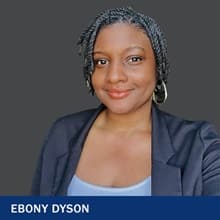
For some students, like Ebony Dyson '23, a glimpse into their future and the chance to make professional connections were motivating factors for participating. Dyson graduated from SNHU last year, earning her BA in Psychology with a concentration in Child and Adolescent Development, and participated in the 2023 EI Challenge prior to completing her program.
“My goal is to assist organizations in enhancing their work environment,” she said. “I thought that completing a challenge that highlighted EQ would help introduce me to what my future work may look like.”
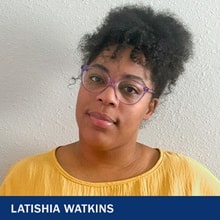
The challenge gives students a space where they can explore, engage and experiment without the pressure of earning a grade at the end. The result of this design is an emphasis on communication, collaboration and teamwork — takeaways that resonated, particularly, with student Latishia Watkins '23. Watkins, like Dyson, participated in last year’s challenge, and is pursuing her BA in Human Services with a concentration in Child and Family Services.
“We worked as a community with compassion and grace,” she said. “Not all groups are like that, so I’m grateful.”
Becoming Good Communicators, Agile Teammates and Great Leaders
Garrin, who feels passionately about the multifaceted value of the challenge, said that leadership development is also a purposeful element of the experience. He called it a “silent” goal.
“In each team, leaders quickly emerge — many of whom are already highly skilled at teaching their teammates how to lead authentically, compassionately and by example,” he said.
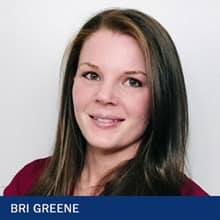
Bri Greene ’24 participated in this spring’s challenge just before graduating with her BA in Psychology and a concentration in Mental Health. Leadership stood out as a “surprising” part of the experience for her, and one she ultimately found great value in.
“Determined to ensure everyone felt valued and heard, I assumed a leadership role on my team — a prospect I had previously dismissed as beyond my capabilities,” she said. “It challenged my preconceptions about leadership and reinforced the importance of embracing discomfort as a catalyst for personal growth.”
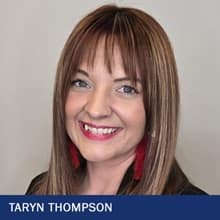
For Taryn Thompson, the EI Challenge felt like a place to practice effective communication and conflict resolution — two elements of emotional intelligence that feel, in her perspective, particularly valuable in a professional setting. As she prepares to wrap up the final credits of her BA in Psychology, the skills she learned in this year’s challenge have her feeling prepared for what’s next.
“By being intentional about communicating with respect and the desire to really understand another’s perspective, I believe there’s no one I wouldn’t be able to work with,” she said.

For other students, challenges within the challenge — like teammates dropping out unexpectedly — served as in-the-moment tests of emotional intelligence skills. Jordan Berteau, who is currently pursuing her Bachelor’s in Psychology with concentrations in Applied Psychology and Forensic Psychology, encountered such hurdles. (SNHU is not currently enrolling new students in the applied psychology concentration.) But she chose to use them as opportunities to put her EQ to the test.
“My biggest takeaway has to be the ability to be steadfast in moments of uncertainty, and embrace changes and new ideas with unwavering flexibility,” she said.
Thompson said something hugely important about emotional intelligence, echoing Garrin’s earlier sentiment: anyone can learn it. And in her mind, everyone should.
“Developing these skills is a never-ending journey. No matter how comfortable you are with them today, you can continue to improve them,” Thompson said. “I truly believe that if we all continue to grow in these skills, the world could be a much more inclusive and compassionate place.”
A degree can change your life. Find the SNHU social sciences program that can best help you meet your goals.
Abigail (Abby) Mark ’23G is a brand copywriter and contributing content writer at Southern New Hampshire University (SNHU). Prior to her role in marketing, Abby spent four years on SNHU’s student experience team as an academic advisor and team lead of academic advising. In 2018, she graduated from Saint Anselm College with a Bachelor of Arts in Psychology and went on to earn her Master of Arts in English & Creative Writing at SNHU in the spring of 2023. She recently joined the adjunct faculty team at SNHU and teaches creative writing to online undergraduate students. Abby hopes her writing will help prospective students and employees alike see just how transformative SNHU could be for them (as it’s been pretty transformative for her). Connect with her on LinkedIn.
Explore more content like this article

Reflective Thinking: What It Is, and Why You Should Try It

How to Negotiate Salary

How to Get Leadership Experience
About Southern New Hampshire University

SNHU is a nonprofit, accredited university with a mission to make high-quality education more accessible and affordable for everyone.
Founded in 1932, and online since 1995, we’ve helped countless students reach their goals with flexible, career-focused programs. Our 300-acre campus in Manchester, NH is home to over 3,000 students, and we serve over 135,000 students online. Visit our about SNHU page to learn more about our mission, accreditations, leadership team, national recognitions and awards.


